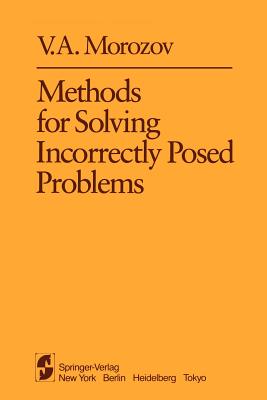You are here
Back to topMethods for Solving Incorrectly Posed Problems (Paperback)
Email or call for price
Description
Some problems of mathematical physics and analysis can be formulated as the problem of solving the equation f F, (1) Au = f, where A: DA C U ] F is an operator with a non-empty domain of definition D, in a metric space U, with range in a metric space F. The metrics A on U and F will be denoted by P and P ' respectively. Relative u F to the twin spaces U and F, J. Hadamard P-06] gave the following defini- tion of correctness: the problem (1) is said to be well-posed (correct, properly posed) if the following conditions are satisfied: (1) The range of the value Q of the operator A coincides with A F ("sol vabi li ty" condition); (2) The equality AU = AU for any u, u DA implies the I 2 l 2 equality u = u ("uniqueness" condition); l 2 (3) The inverse operator A-I is continuous on F ("stability" condition). Any reasonable mathematical formulation of a physical problem requires that conditions (1)-(3) be satisfied. That is why Hadamard postulated that any "ill-posed" (improperly posed) problem, that is to say, one which does not satisfy conditions (1)-(3), is non-physical. Hadamard also gave the now classical example of an ill-posed problem, namely, the Cauchy problem for the Laplace equation.

